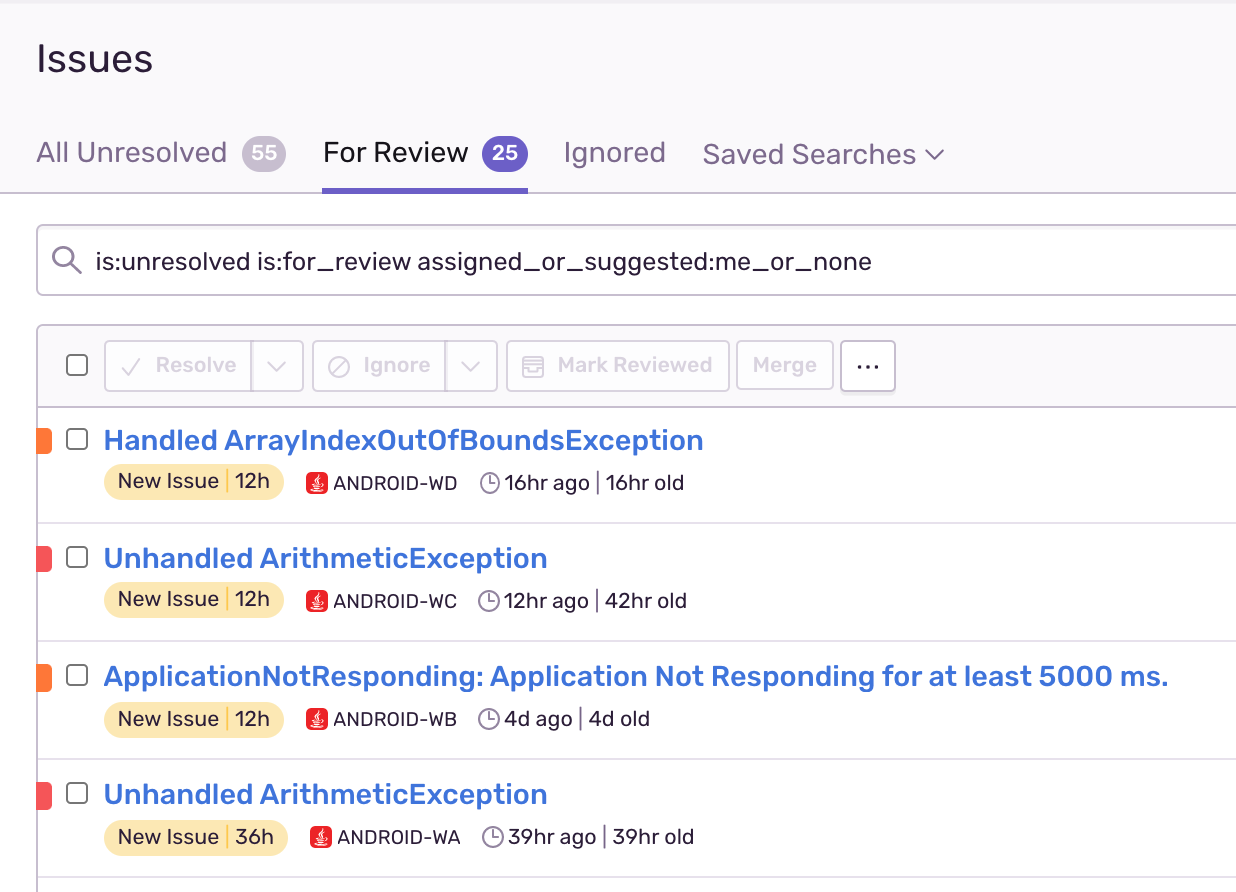Silencing Distractions with Review List and Automations
Silencing Distractions with Review List and Automations
Responding to and ignoring notifications can be a full-contact sport. It makes sense, though, from GitHub, Slack, to Jira and Sentry; our world revolves around robots telling us everything is important, critical, and urgent. Just like that, it’s near impossible to see what actually matters so you can solve quicker and more comprehensively.
To bring a little focus back to our days (we build software too), we extended Sentry’s filtering conditions, built a curated list of issues that need your immediate attention, dropped convenient links to your repository, and automated ticket creation. All so you can focus on what’s actually important and critical to your code health and users.
Filter by ownership - Instead of seeing other team’s issues, you can now filter to only show issues by assignee AND suggested assignee. This means you see issues that you’re responsible for or caused by changes that you or your team committed.
Review List - Unless you write pristine code and your services are faster than the Flash, you’re sending a good amount of events to Sentry. Which means it could get a bit noisy from time to time. Now grouping and merging issues help drown out the background noise like in-ear headphones. Review List, however, is the noise-canceling button for those headphones. It’s the only thing you need to look at when you pop into Sentry. Regressions, new critical issues, and previously ignored issues that can’t be ignored anymore are all collected in one simple to parse list so you can solve what is truly urgent.
Review List is being rolled out to everyone over the next few weeks. Be on the lookout for an in-app notification.
Stack Trace Linking - Instead of infinite scrolling through countless lines of code, Sentry’s formatted stack trace lets developers jump past the library code directly into the code you care about. And now, with stack trace linking, you can deep-link to your repo in GitHub to see the broken code in the context of where it lives in your codebase.
Rule-Based Jira and Azure DevOps Issue Creation - But hey, you’re on it — issues are merged, you comb through the review list, notifications skip your inbox and go right to Slack, metric alerts are configured, and if something catastrophic happens you route issues via PagerDuty. If I had to guess, the next thing you do is manually fill out a Jira Issue or AzureDevOps ticket to make sure things get fixed and not lost in the shuffle.
This is fine, but suboptimal. We updated our Jira and Azure Devops integrations to automate that whole flow. So a previously ignored issue is seen by 100 users in one minute, matches a specific URL tag, just let Sentry create the Jira or Azure DevOps ticket for you. Sentry will populate all the relevant details, add it to the backlog you specify and automatically assign it to the developer that can fix the issue.
Look, distractions and unnecessary notifications will probably continue to fight for our attention for a while. But by organizing information and automating mundane tasks Sentry is able to remove any ambiguity around if an issue should be addressed, by whom, and in what priority order. Dare I say, it may even make being on bug fix rotation… fun.
Let us know what you think — drop us a line at our forum or on discord. And if you’re new to Sentry, you can try it for free today or write to sales@sentry.io to get started.






